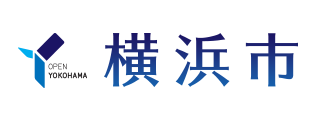Here's the text.
Past Sea Creation Business
Last Updated July 15, 2020
Preliminary experiment of water purification at Nippon Maru Dock (2007)
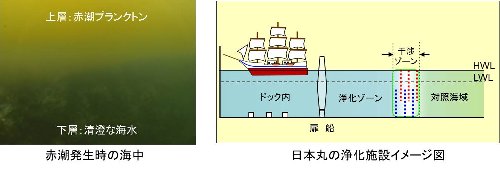
Red tide plankton and muddy water due to rainfall tend to drift near the sea surface.
At the time of the red tide in the photo, a border (Yuragi) appeared near a depth of about 2m, and a deeper place was clear seawater.
We believe that a simple underwater screen can be expected to have a blocking effect, so we droop the underwater screen from the sea surface to a depth of 5m.
We examined whether it could control muddy water during red tides and rainfall.
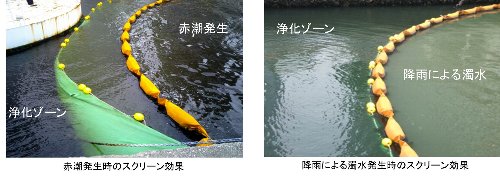
A red tide occurred immediately after installing an underwater screen up to a depth of about 5m.
At this time, the red tide reached a depth of about 3m from the sea surface, but the red tide did not enter the purification zone.
Since freshwater rainwater is lighter than seawater, it drifts near the surface layer on quiet sea surfaces.
Rainwater containing turbidity that has flowed into the sea area is blocked by an underwater screen.
As a result, as shown in the photo, it was found that red tide and muddy water do not enter the inside of the screen (purification zone), maintaining a clear situation.
In order to confirm the effect of the underwater screen, we conducted a water quality survey after rainfall.
As a result of the water quality measurement, the transparency showed the effect of the underwater screen in both measurements.
The results of chlorophyll a and COD measurements show that water quality surveys were conducted in autumn and winter.
The amount of plankton generated was small, and the effect could not be confirmed.
As for turbidity, there was a difference in the measurement on December 23, but there was no difference in the survey on October 28.

Water purification experiment in the Yamashita Koen-mae Sea Area - shallow survey (2007)
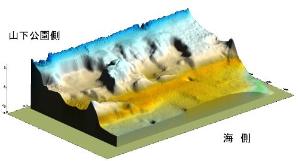
Based on the results of the experiments at the Nippon Maru Dock, we conducted high-precision three-dimensional deep shallow surveys, sludge deposition surveys and biological distribution surveys in three areas: the Yamashita Koen-mae Sea Area, the Zounohana Port Area, and the sea area between Kisha-Michi Promenade and KitanakadoriYamashita Koen-mae.
Deep shallow survey map of the Yamashita Koen-mae Sea Area (March 22, 2008) (PDF: 305KB)
Water Purification Experiment in the Yamashita Koen-mae Sea Area - Partial Purification Experiment (2008)
As a result of a preliminary survey conducted at the end of fiscal 2007, the seabed in front of Yamashita Park was found to be about 30 m offshore from the quay and 3 m to 5 m deep from the seabed.
In fiscal 2008, we believe that it is important to enhance the water purification capacity of the sea, and physically separated by underwater screens to suppress the inflow of red tides and muddy water due to rainfall, which tend to drift near the sea surface, and examined the effects of water purification by living creatures. In addition, since the Yamashita Koen-mae Sea area was decided to become a swim venue for the 2009 Yokohama International Triathlon Tournament in August 2009, the sea where you can swim was also important.
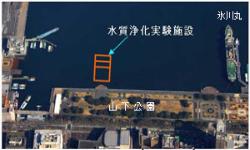
Experimental Facility
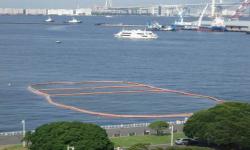
Installation diagram of the experimental facility
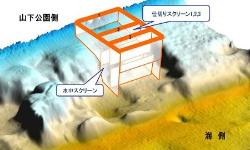
3D images of experimental facilities
Overview of the survey
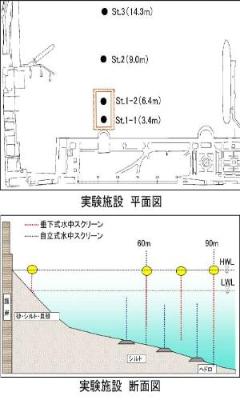
- Survey points
Yamashita Koen-mae, Naka-ku, Yokohama
- Experiment period (screen installation period)
From July 15, 2008 to March 26, 2009
- Details of the survey
We conducted general environmental items, water quality items, bottom quality items, biophysiological surveys, etc.
In addition, since it was known that it will be used as a triathlon swim venue, evaluations were also conducted from the viewpoint of bathing water quality judgment criteria.
Results of the survey
- Transparency Results
Transparency in front of Yamashita Park. There is no difference at any point until about three months have passed since the installation of the water purification experiment facility, but there is no difference at any point.
After three months, you can see that St.1-2 is more transparent than St.2 and St.3.
This means that many filtration bivalves and other organisms grow on underwater screens and anchors, functioning as a base for living organisms, such as transparency, etc.
It was found that it would contribute to the improvement of the marine environment. Since St.1 has a water depth of about 3m, it can be seen that the lower value comes out due to the winding of the bottom mud.
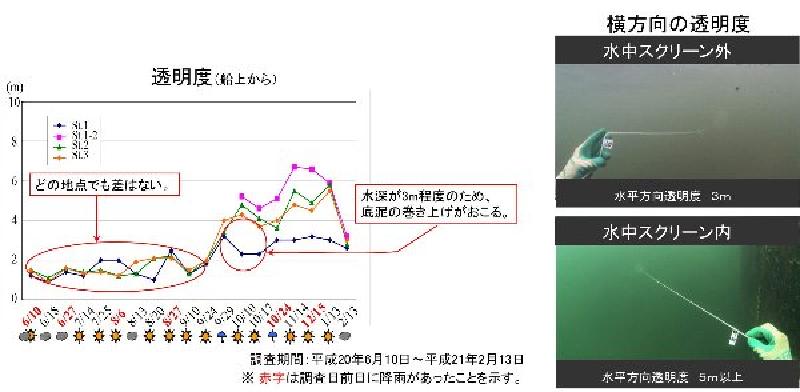
- Results of bottom quality survey
The revetment in front of the Yamashita Park was masonry, and the surface was found to be attached to oysters, wisteria, and mussels.
Under the seawall, a shell bed with shells such as oysters and mussels that had fallen off the seawall was formed.
As the water depth increased, it became a reduced seabed with increased organic pollution, containing a lot of silt and clay.
From this, it is thought that it is limited to living organisms such as sulfuric acid reduction bacteria that can inhabit even if they are anobic in summer.
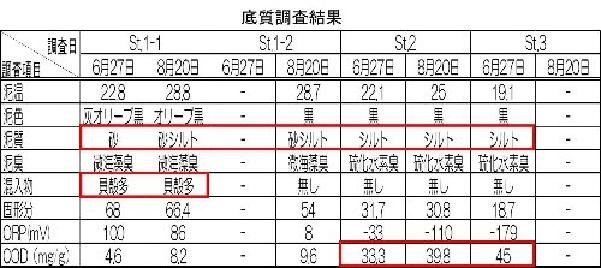
- Seabed in front of Yamashita Park
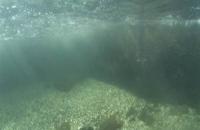 Just under the seawall
Just under the seawall
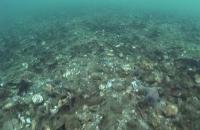 Water depth 1 to 3m
Water depth 1 to 3m
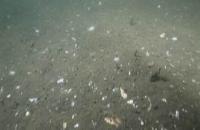 Water depth 3 to 5m
Water depth 3 to 5m
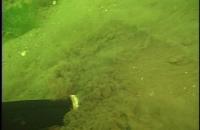 Depth of 5m or more
Depth of 5m or more
Water purification experiment in Yamashita Koen-mae Sea Area - Triathlon Edition (2009)
In fiscal 2008, we were able to understand the effect of partitioning with a screen as a pilot experiment in front of Nippon Maru Dock and Yamashita Park.
As a result, the effect of mitigating the effects of red tide and turbid water, reducing the number of fecal coliform bacteria and improving transparency through biological purification functions were obtained.
In fiscal 2009, we conducted experiments for practical use in the waters near Yamashita Park. In addition, many citizens visited in front of Yamashita Park, and since the 2009 Yokohama International Triathlon Tournament was also scheduled, we actively provided information and other public information to raise public interest.
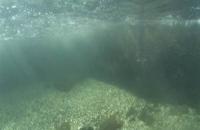
Just under the seawall
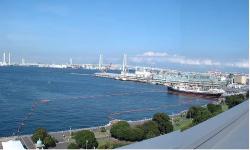
Experimental Facility
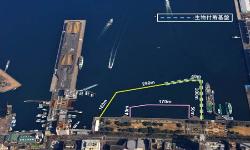
Installation diagram of the experimental facility
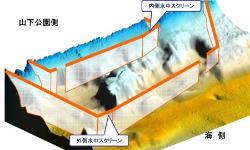
3D images of experimental facilities
Overview of the survey
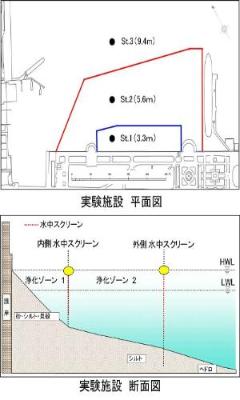
- Survey points
Yamashita Koen-mae, Naka-ku, Yokohama
- Experiment period (screen installation period)
Inner screen: From July 13, 2009 to September 25, 2009
Outer screen: From July 24, 2009 to September 11, 2009
- Details of the survey
Experiments were conducted with the aim of purifying water by aquatic organisms, controlling turbid water such as red tide by underwater screens, installing a base for living organisms, and understanding the purification capacity of living organisms by covering sand.
Results of the survey
- Results of water quality survey
In both illuminance and transparency, the deeper the water, the lower the water. This may include creatures that live in the Asanami area, creatures that live on the screen, and the physical control effect of the screen itself.
Especially in the Asanami area (near st1), there are many creatures such as mussels attached to the seawall in front of Yamashita Park, which is considered to have water purification capacity.

- Experimental results to enhance purification capacity
The base for living organisms was installed on July 27, 2009, and the transition status (September 4, 2009) from the state where there were no attached organisms was confirmed by visual observation.
- Materials used
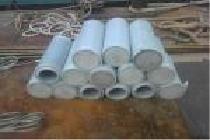
Living Foundation 1 (Concrete Pipe)
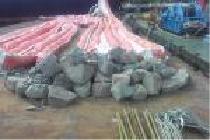
Base 2 (Natural Stone: Andesite)
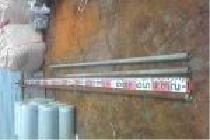
Biological mounting base 3 (iron pipe)
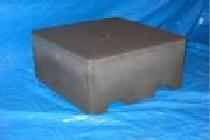 Biological mounting base 4 (Slag products)
Biological mounting base 4 (Slag products)
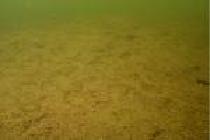 Sand cover (mountain sand)
Sand cover (mountain sand)
From this experiment, it is thought that the living base has led to the improvement of the habitat. We believe that sand covering has been effective with an increase in living things.
In addition, it was thought that a lot of adhering organisms could be obtained by installing them in a place where the water depth was shallow and the amount of dissolved oxygen could be secured.
With regard to materials, it was not possible to judge superiority only by this experiment.
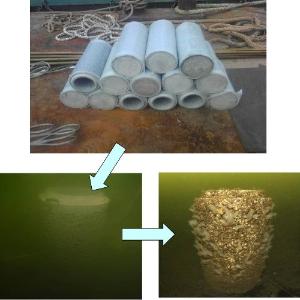 Biological mounting base (concrete pipe)
Biological mounting base (concrete pipe)
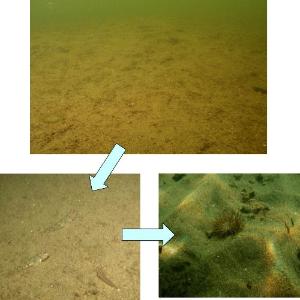 Goby and Isoginchak settle on the sand cover
Goby and Isoginchak settle on the sand cover
Sea-building round-table conference
About the details of the sea making round-table conference
・About the first round-table conference (March 18, 2010)
・About the 2nd round-table conference (July 25, 2010)
Efforts for the Practice of Sea Purification (2010)
As a result of partial purification experiments conducted in Yamashita Koen-mae and other areas, it was found that in order to further improve the water quality of Yokohama Port, it is important to create a sea that utilizes the purification capacity of marine organisms.
In order to promote the creation of a sea with a rich purification capacity that can be familiar to citizens, grasp the current situation of the city coast, select candidate sites to promote sea purification, and sea areas at candidate sites We examined purification methods suitable for the situation.
Mayor press release (PDF: 303KB)
You may need a separate PDF reader to open a PDF file.
If you do not have it, you can download it free of charge from Adobe.
![]() To download Adobe Acrobat Reader DC
To download Adobe Acrobat Reader DC
Inquiries to this page
Environmental Science Research Institute, Environmental Conservation Department, Green Environment Bureau
Telephone: 045-453-2550
Telephone: 045-453-2550
Fax: 045-453-2560
Email address: mk-kanken@city.yokohama.lg.jp
Page ID: 558-157-694

